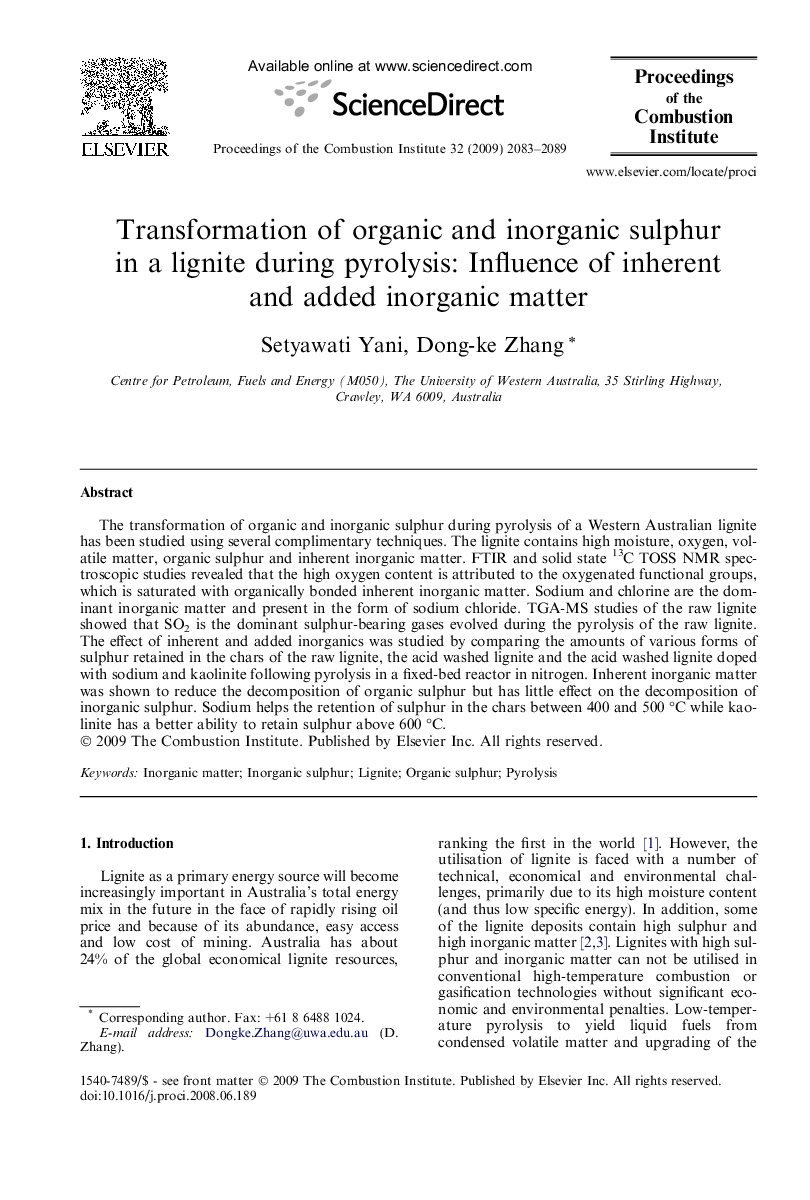| Article ID | Journal | Published Year | Pages | File Type |
|---|---|---|---|---|
| 241062 | Proceedings of the Combustion Institute | 2009 | 7 Pages |
The transformation of organic and inorganic sulphur during pyrolysis of a Western Australian lignite has been studied using several complimentary techniques. The lignite contains high moisture, oxygen, volatile matter, organic sulphur and inherent inorganic matter. FTIR and solid state 13C TOSS NMR spectroscopic studies revealed that the high oxygen content is attributed to the oxygenated functional groups, which is saturated with organically bonded inherent inorganic matter. Sodium and chlorine are the dominant inorganic matter and present in the form of sodium chloride. TGA-MS studies of the raw lignite showed that SO2 is the dominant sulphur-bearing gases evolved during the pyrolysis of the raw lignite. The effect of inherent and added inorganics was studied by comparing the amounts of various forms of sulphur retained in the chars of the raw lignite, the acid washed lignite and the acid washed lignite doped with sodium and kaolinite following pyrolysis in a fixed-bed reactor in nitrogen. Inherent inorganic matter was shown to reduce the decomposition of organic sulphur but has little effect on the decomposition of inorganic sulphur. Sodium helps the retention of sulphur in the chars between 400 and 500 °C while kaolinite has a better ability to retain sulphur above 600 °C.
